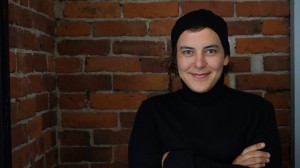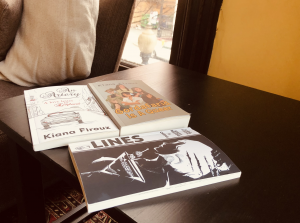London, England Mar 21, 2023 (Issuewire.com) - Kiana Firouz was born in Tehran but lives in London. She studied film and media at the Birkbeck University of London before working as a producer. Firouz has worked on a variety of short films, novels, and TV projects both in Farsi and English. She is driven towards compelling, bold, and risk-taking stories focusing strongly on breathing life into dynamic and original female characters; creating intelligent, intriguing, and unique plots; and offering thought-provoking and meaningful messages that are current and relatable in today’s ever-changing world.
Your books are about leftover feelings, past relationships, love, broken hearts, hedonism, much higher purpose in life, and most importantly, you talk about choices; Tell us why these themes are your choices. Also, I believe you’re releasing all three books together in 2023. Why?
Love is a complex and powerful emotion that drives many individuals towards different paths in life. It is an undeniable force that compels people to act, feel and think in a way that they may not have otherwise. From sacrificial love to passionate love, the different types of love each evoke a distinct set of emotions that can both inspire and torment individuals. But I’m interested in the notion of choice. Also, I think treating love as a sacred, almost divine concept can be problematic, as it often leads to minimizing our own choices and agency. In reality, though, love is a human emotion that we have control over. Recognizing this can help us establish healthier and more equal relationships based on mutual respect and support.
As for releasing the books together, these three stories define me as a storyteller at this stage. Gordafarid Is A Queer is a love letter to Iran, my birth country, and An Artery is a love letter to England, where I’ve found refuge. However, Lines is more intimate and personal to me. It taps into all of my senses.
How long have you been working on them?
Lines was born first, and as a screenplay, and was meant to be a movie.
It goes back to May 2019. I was a TV Producer for an Iranian news TV channel based in London, and I was an in-house producer covering the Cannes film festival, the year that Cate Blanchett was the President of the jury, the year that Céline Sciamma’s masterpiece Portrait of a Lady on Fire rightfully won the best screenplay award. I knew I had to leave my day job to spread more storytelling magic. Filmmaking/storytelling has been my passion since I remember, and I have always had unproduced scripts, stories, and ideas; I felt I needed to fulfill my purpose before it gets too late.
What happened to it, to Lines? What was the process of transforming the script into a graphic novel?
Well, filmmaking is expensive, so I considered choosing one location to tell a story; put simply, making a low-budget but high-concept movie. Had an aha moment that I can make Who’s Afraid of Virginia Woolf? movie, but in a lesbian style. So started digging to visualize the characters, vibe, etc. Then I met a fantastic collaborator and amazing writer, Stacey Williams, and the journey of Lines started. Our first attempt at shooting that script didn’t go as planned due to the budget and some other broken promises. I tried to perfect the story over time until I decided to publish it as a graphic novel to see what the future holds for it.
Who is the main character in this four-handed drama? And what happens if the main character doesn’t get her goal?
Everyone should have their own take of who’s the main character in this story but, to me, Robin is the antagonist, an outsider, younger and presumably less experience among them all, suffering from some sort of mother issue; we tried to portray that during her phone call’s conversation. She is the one who needs the survive the evening and keep her relationship since she has nowhere to go. On the other hand, Cate has a goal too. She is after pleasure and excitement. Cate has a manipulative character, so if she doesn’t achieve her goal, her life will be boring. Tilda and Julia also have their own agenda, but perhaps not as strong as Cate and Robin.
Is Cate the most powerful of them all, right? She is the queen of the evening.
We played with the power shift, in writing and also in portraying the setting. Nothing in this story is there for good same as life; nothing is forever. So power shifts between them throughout the story.
In your opinion, which of them could make a good couple? There is a potential of six couples between these four ladies.
I cannot say that; I don’t want to unpack this story like that. I believe there is no such thing as a perfect relationship, but a healthy one that advocates tolerance, loving, acceptance, and responsiveness. I also believe walking away from a toxic relationship isn’t easy, but it’s brave and strong. And it is always okay to feel bad and sad after making the right decision. And it is always, always worth it.
What do you hope readers take away from your stories?
I’d love for them to have an immersive experience, a voyeuristic one. I would definitely shoot it in one take with a handheld camera if it was a movie; I would make it breathtaking to watch, even with the sound off. Hoping the illustration in black-and-white manga style, which has a halftone screening with a hatching shading style, could convey the accurate feeling of the written story and its claustrophobic situation. Hoping the readers acknowledge that all awkwardness and flaws are part of the game.
Some of your lesbian character's morals are questionable. Isn’t it against the good representation value of the lesbian community?
Well, I think It’s time to step forward and beyond in lgbtq+ storytelling. Let’s mess it up. There is no doubt in the proud existence of our great community that is rocking the world, but I think it’s fun to portray bad ones in the story. Although I don’t believe Cate in Lines or Carrie in An Artery are necessarily bad people, they are just being human. I firmly believe that complicated characters are more relatable. I wanted to show them as honest as possible and wild and beautiful.
Speaking of An Artery, tell us about your collaboration with Stacey Williams since you mentioned you collaborated to write a script of Lines before that.
During the festive season of 2020, was the pandemic lockdown, and I used to watch those walking tour videos on YouTube for the change of scenery since we couldn’t travel; I contacted Stacey to see if she was up for collaborating on writing a story for a movie about two women in their mid-40s on the road from London to Margate. We started exchanging emails, including music, pictures, and ideas. Finally, in early March, we had six pages of beat-sheet of events for the story. Then lockdowns lifted, and we had to return to our day jobs. We let this project rest without discussion; as if we knew life had another plan. Little did I know I would spend the following summer in Dubai to work on this story as a book. As I mentioned on the acknowledgment page in the book, you see only one name as an author, but these stories couldn’t exist if there weren’t people to challenge me.
Let’s talk about Gordafarid, whom you say is a queer. Are you Javid, your main character who has always wanted to give back to her birth country? Hence you dedicated the book to Farsi-speakers’ lesbians.
Not really, this is the story I longed to have and read as a teenager back in Tehran, but wasn’t out there. I wanted the future generation to have a story and characters as such to feel related to them. Currently, no one can publish any book with lgbtq+ content in Iran.
In Shahnameh: The Epic of the Persian Kings, written over 1,000 years ago, Ferdowsi never said that Gordafarid had a female lover; in fact, there is no such evidence anywhere. Don’t you worry about the backlash?
I believe this would make Ferdowsi thrilled. Ferdowsi was a progressive, cool, and open-minded patriotic soul. Also, Gordafarid is indeed a Sapphic heroine; I’m telling you, IT IS so obvious...(laughing). I’m hoping one day, there will be a movie about Gordafarid’s affairs with her female lovers. That would be an exhilarating movie to watch. It’s joyous to imagine that she is in love with one of the skilled female warriors in her army.
Are you a romantic person?
I thought you’d never ask...(smiling), and YES, I was a much better one when I was younger.
That brings us to the point of talking about your love story on the road. In An Artery, it feels it’s not important what Beth and Anna are talking about; it’s how much they enjoy communicating with each other. The subject swings wildly from deeply exposing secrets to their career choice. Is that how you see love, being comfortable with someone?
Well, the real talking is done with the eyes and the gestures of the body for the lovers, simply because you feel you have known her for ages. Plus, the road itself is a symbol of freedom, breaking away from security and embracing change; to encounter a whole range of natural landscapes in is contrasted with banal, manmade architecture and also meeting people outside the normal experience, which will make them grow and become whole. Same as the High Art movie by Lisa Cholodenko and Richard Linklater’s Before the Sunrise movie, both 90s golden films. What they have in common is a feeling that if there was any justice in the world, these two would be together. It’s just so clear from the very start, but letting us take a journey with them.
For the last question, tell me, what do you hope readers say about your stories?
That they are wildly entertaining… I wish the readers lose track of time while reading them.
Media Contact
Firouz Media Limited *****@firouzmedia.com https://apnews.com/press-release/ein-presswire-newsmatics/iran-books-and-literature-ein-presswire-newsmatics-9bc930ed931c1cb6bc20cefe17fecf30










